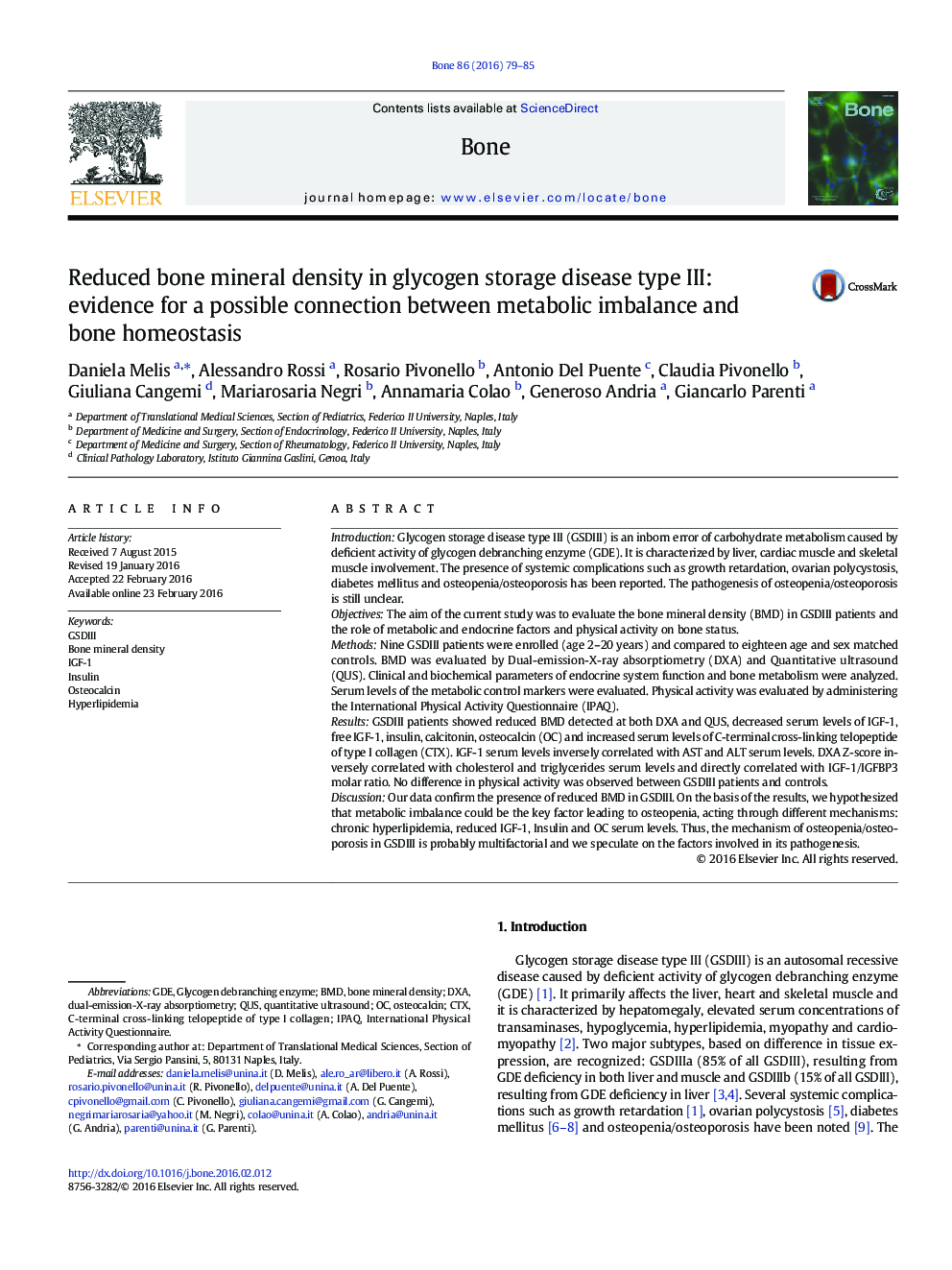| کد مقاله | کد نشریه | سال انتشار | مقاله انگلیسی | نسخه تمام متن |
|---|---|---|---|---|
| 5889064 | 1568133 | 2016 | 7 صفحه PDF | دانلود رایگان |

- The pathogenesis of osteopenia in glycogen storage disease type III (GSDIII) is still unclear
- Several endocrine and metabolic factors are known to affect BMD as well as physical activity
- We found reduced levels of IGF-1, IGF-1/IGFBP3 molar ratio, insulin, calcitonin and osteocalcin and increased serum levels of CTX
- DXA Z-score correlated inversely with cholesterol and triglycerides levels and directly with IGF-1/IGFBP3 molar ratio
- Results shed light on possible factors leading to osteopenia and may be relevant in the management of GSDIII patients
IntroductionGlycogen storage disease type III (GSDIII) is an inborn error of carbohydrate metabolism caused by deficient activity of glycogen debranching enzyme (GDE). It is characterized by liver, cardiac muscle and skeletal muscle involvement. The presence of systemic complications such as growth retardation, ovarian polycystosis, diabetes mellitus and osteopenia/osteoporosis has been reported. The pathogenesis of osteopenia/osteoporosis is still unclear.ObjectivesThe aim of the current study was to evaluate the bone mineral density (BMD) in GSDIII patients and the role of metabolic and endocrine factors and physical activity on bone status.MethodsNine GSDIII patients were enrolled (age 2-20Â years) and compared to eighteen age and sex matched controls. BMD was evaluated by Dual-emission-X-ray absorptiometry (DXA) and Quantitative ultrasound (QUS). Clinical and biochemical parameters of endocrine system function and bone metabolism were analyzed. Serum levels of the metabolic control markers were evaluated. Physical activity was evaluated by administering the International Physical Activity Questionnaire (IPAQ).ResultsGSDIII patients showed reduced BMD detected at both DXA and QUS, decreased serum levels of IGF-1, free IGF-1, insulin, calcitonin, osteocalcin (OC) and increased serum levels of C-terminal cross-linking telopeptide of type I collagen (CTX). IGF-1 serum levels inversely correlated with AST and ALT serum levels. DXA Z-score inversely correlated with cholesterol and triglycerides serum levels and directly correlated with IGF-1/IGFBP3 molar ratio. No difference in physical activity was observed between GSDIII patients and controls.DiscussionOur data confirm the presence of reduced BMD in GSDIII. On the basis of the results, we hypothesized that metabolic imbalance could be the key factor leading to osteopenia, acting through different mechanisms: chronic hyperlipidemia, reduced IGF-1, Insulin and OC serum levels. Thus, the mechanism of osteopenia/osteoporosis in GSDIII is probably multifactorial and we speculate on the factors involved in its pathogenesis.
Journal: Bone - Volume 86, May 2016, Pages 79-85